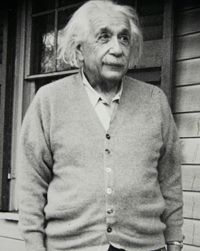
What is Occam's Razor?
You've probably heard it before: The simplest explanation is usually the right one. Detectives use it to deduce who's the likeliest suspect in a murder case — you know, the butler did it. Doctors use it to determine the illness behind a set of symptoms. Whenever you have two or more theories that make exactly the same predictions, the simpler one is always best.
This line of reasoning is called Occam's razor. It's used in a wide variety of ways throughout the world as a philosophical tool to slice through a problem or situation and eliminate unnecessary elements. But what we call the razor is a little different than what its author originally wrote. There are two theories that are considered the basis of Occam's razor, and they were originally written in Latin:
Advertisement
- The Principle of Plurality: Plurality should not be posited without necessity
- The Principle of Parsimony: It is pointless to do with more what is done with less
Taken together, they represent the basis of humanity's investigation into the universe, and the way we see our environment is largely based upon Occam's razor. There's no telling what kind of world we would live in today without Occam's razor. Would we have the Internet? Would we have inoculations? The problem solving principle has also been used to justify uncertainty in quantum mechanics. Quantum mechanics works well as a mathematical theory for predictions, but doesn't predict what will happen just what the probabilities of differing outcomes are.
Consider simple systems in nature, like viruses and plants, and their ability to carry out complex tasks such as infection and photosynthesis. We value these simple models. And when it comes to man-made systems, we tend to base structures upon what we already know works — the simplest explanation to us — like computer memory modeled on our own brain processes. All of which points to the principles of plurality and law of parsimony.
However, one of the key things that Occam's razor reveals is the subjectivity with which we view the universe. Sure the sky is blue, we know that by looking at it, but what shade of blue is it exactly? Anyone who has ever engaged in a debate over whether a dark-colored sock is black or navy can appreciate the bias of our worldview and how it affects our decisions.
In this article, we'll examine the ability of Occam's razor to become distorted, as well as who distorts it, who prizes it and who shuns it. But first, who exactly came up with this simple, yet complex idea? In the next section, we'll learn about the author of Occam's razor.
Advertisement






